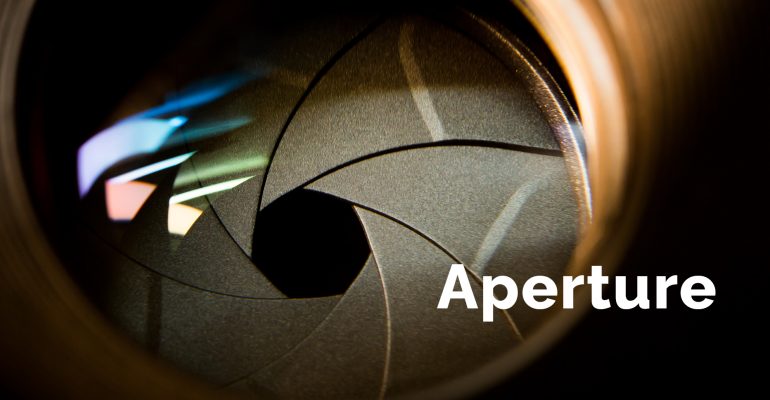Article By – Chinar Tekchandani & Apurv Jadhav
What is aperture?
Aperture refers to the opening of a lens diaphragm through which the light passes. In other words, it is the F-stop number on your camera.
People usually work the exposure triangle to get the desired images. The exposure triangle consists of the aperture, ISO and shutter speed. Each of these modes can be worked upon individually till you are comfortable with using them all together in manual mode.
In this article, we will focus on understanding all the basics of aperture. Since you already know what the definition of the aperture is, let’s understand what it does.
Aperture controls the amount of light that enters the camera and it also controls the depth of field in the image. Depth of field refers to how much of the exposed field is in focus in front of and behind the concerned subject. When a person says, the image has more depth, it means that a greater area has been in focus apart from the subject and vice-versa.
Depth of Field (DoF) is of two types:
1. Shallow
The shallow depth means less depth in focus. This can be achieved by setting a lower F-stop number. 1.4 to 5.6 is considered as a range of low F-stop numbers. This will allow more light to enter the camera thereby reducing your focus plane. You can blur the foreground or background of your image if you want.

Image credit : Apurv Jadhav
2. Deep
Deep depth means that there is a higher focus range. It keeps everything in the image sharp and crystal clear. The included range can be from a couple of yards to infinity. With a higher F-stop number, lesser light will enter the camera thereby increasing the focus.

Image credit : Apurv Jadhav
The relation of aperture with the depth of field is fairly simple. They have a direct relationship. A lower aperture number will reduce the depth and vice-versa.
How should one decide which aperture number to use?
A lower aperture number is used to isolate the subject from foreground and background. It makes the background look cleaner and helps to create a bokeh effect. A higher number will increase the depth of field which can be used to avoid any kind of shallowness in the image. It makes the background very sharp. The focus field increases quite a bit and this can be used in landscape photography.
It is important to note here that, it’s not only the aperture that affects the depth of field. There are other parameters also that have an important role to play. These parameters include:
1. Focal length : This has an inverse relationship with DoF. Less focal length means higher depth and vice-versa.
2. Sensor size : The smaller the size, the more will be the DoF and vice-versa.
3. Distance between the camera and the subject. : When a camera is closer to the subject, the depth will be less. For a greater DoF, one can move away from the camera.
“Look and think before opening the shutter. The heart and mind are the true lenses of the camera”.
Yousuf Karsh
The point of this quote is- Understand the concept of ‘Depth of Field’ before applying it practically. This is about what you want to focus in your image. Your camera can only focus sharply at one point. So if you want to blur out the cluttered background with a focus on just one small area, your DoF should be shallow. This concept of depth is useful in all genres of Photography. However, if you want clarity in your entire image, a deeper field will work better for you.
We have tried to emphasize some points repeatedly in this article so that the concept is easier to understand. We hope this helps you learn this concept and helps you to apply it practically!

